Greetings, my name is Lulu Pumayalli and I am interning at the Coastal Marine Institute Laboratory (CMIL) in San Diego, California. In my previous blog, I talked about how I am going to be working with a type of algae called Ulva Lactuca or Sea Lettuce and studying how it absorbs anthropogenic pollutants from aquatic environments. This week, I worked with Leslie and Torre (the people doing this experiment with me) and we finished setting up for the experiment and were able to run it on Friday. Last week, we filled up 81 tanks with the same quantity of extra clean seawater but with three different biomasses of Ulva. To create different measurements of Ulva, we cut out small circles and with cylinder cutters and then counted each of the circles to add to the tanks. One group of tanks had a small biomass of Ulva which meant it had 18 disks of the Ulva cutouts. The tanks with a medium amount of Ulva had 36 and the tanks with a lot of biomass had 72 disks. After this, we created a diluted solution of fertilizer by mixing water and fertilizer for 24 hours to make sure it is well mixed. We spent a lot of time cutting disks from the Ulva that grows at CMIL because we cut over 4 thousand disks because by the time we added the biomass to the tanks some pieces were broken so we had to cut a lot more. Another thing we had to do to prepare for the experiment was label bags and containers to put the water samples in.
After spending 2 weeks preparing for the experiment, we finally were able to run it. To start the experiment, 3 other people and I added fertilizer to ⅔ of the tanks at the same time. Two of us added a small portion of the diluted fertilizer into 27 tanks, the other two added a medium concentration to different 27 tanks and for the last 27 tanks, nothing was added so that it can be used as our control group. For this experiment, we also had 3 tanks that we didn’t add any Ulva to, but we added fertilizer to see how the water reacted to it without any Ulva. To measure the water in all of the tanks in this experiment, we collected 3 water samples from each tank to freeze and analyze that way. To study how the algae reacts to the fertilizer, we will dry and grind the Ulva into a very fine powder and put it into a small container which will be analyzed at a different lab on the SDSU campus. We divided the 24 hours in this experiment into three different time intervals, the first interval was 3 hours after we added the fertilizer to all the tanks, the second one was 9 hours after and the last one was 24 hours after. At each time interval, 27 tanks were shut down. For each tank, we took out all the Ulva it contained and put it on a baking sheet for it to be dried and we also took 3 water samples to be frozen. We added the fertilizer in at 10:00 am on Friday, then we took out the first group of samples at 1:00 pm, then the second one at 7:00 pm, and the last one at 10:00 am on Saturday. Though the actual experiment is done the project isn’t over. Like I said earlier, we have to dry up all the Ulva and grind each one separately to take to a separate lab. The grinding will probably take all of next week and possibly the next since it takes time and there are a lot of samples to be done. Once all of them are done we are going to analyze what is in each one of the samples and see how well it absorbed the nutrients in the fertilizer.
Aside from running the experiment this week, I was given the opportunity to join Vannessa and Percilla, who are lab members from CMIL, on a boat to drop lobster traps in this huge kelp forest. On the way out of the bay the boat was stationed at, Vannessa let me drive the boat. This was my first time ever driving a boat and I was super excited despite the fact that I was only going 15 miles per hour. A few minutes after leaving the bay we saw dolphins!! These dolphins were pretty close and looked super energetic and happy which obviously made me extremely happy. I was so amazed by how big the kelp was once we got to the kelp forest. The kelp was at least 30 feet tall and there was soo much of it. Once we found an area free of big kelp the trap could get stuck on, we prepared each trap. We added fish to a section of the trap then made sure that the rope attached to the trap wouldn’t get tangled on its way down to the bottom and lastly we threw the traps in. Even though the traps had buoys, we marked the coordinates of where each of the traps we dropped. On the way back we saw dolphins again as well as a sea lion.
During the time we weren’t at the lab, Didi and I spent a lot of time relaxing. Didi’s aunt and uncle have a dog named Dexter who I have really liked spending time with the past 3 weeks. We walk Dexter pretty much every day and snuggle with him on the couch while watching Loki every Wednesday and other movies or shows throughout the week. On Saturday, Didi and I went to Little Italy here in San Diego and went to the farmers market there. We had some really good food and delicious ice cream. We also saw some live music there and a really cool snake statue with many little mirrors on it. On the same day, we saw this super cool plant that looked like purple land kelp. I am so happy with the way the experiment went this week and I am super excited to be sharing more about how it goes next week.

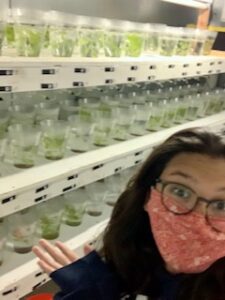
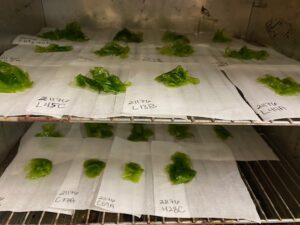
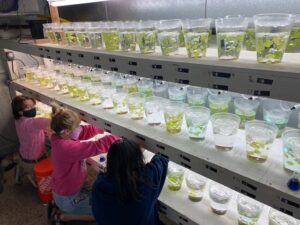
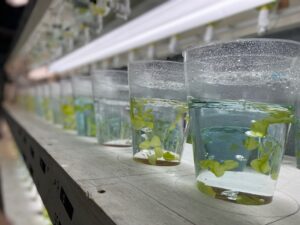
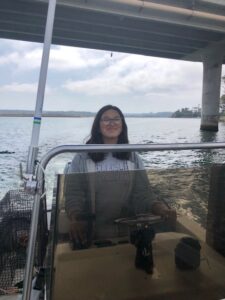
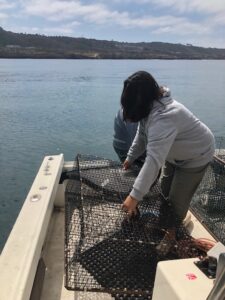
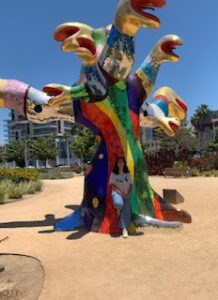
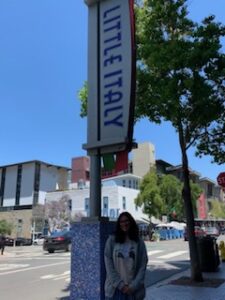
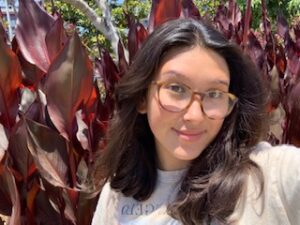
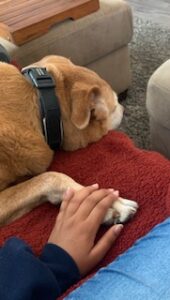
There are no comments published yet.